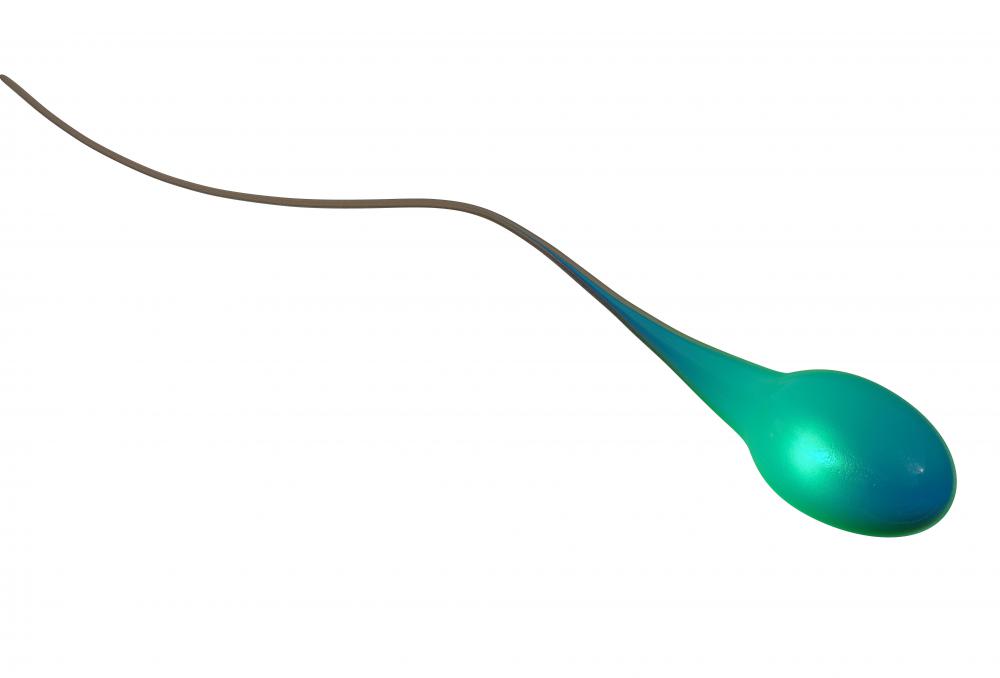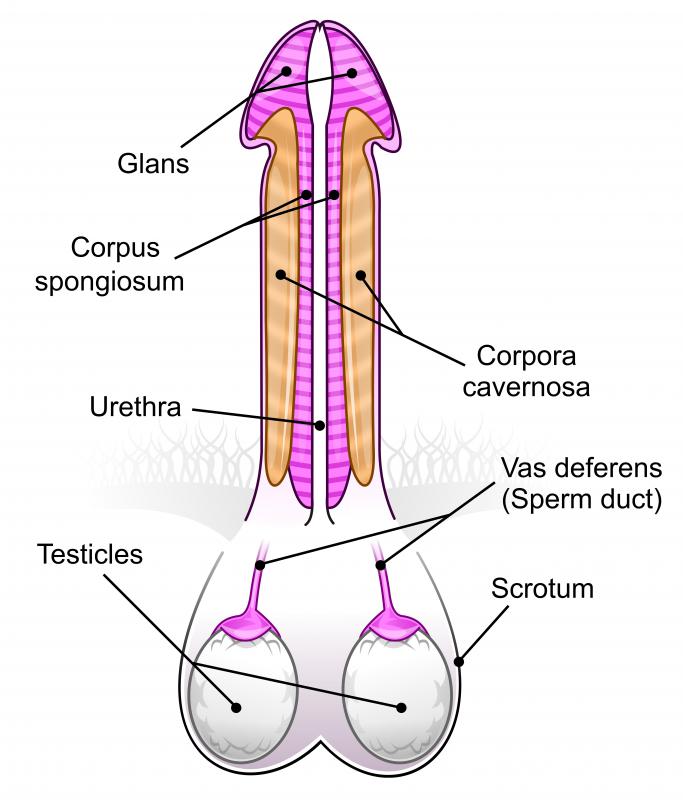At WiseGEEK, we're committed to delivering accurate, trustworthy information. Our expert-authored content is rigorously fact-checked and sourced from credible authorities. Discover how we uphold the highest standards in providing you with reliable knowledge.
What Is the Vas Deferens?
The vas deferens is a narrow tube of the male reproductive system that carries sperm from the epididymis into the body. There are two of these tubes, each located on the side of each testicle. Each tube is about 11.8 inches (30 cm) long and is composed of smooth muscle. It is designed to propel sperm from the epididymis toward the urethra during ejaculation by contracting the muscles.
Sperm are formed in the epididymis, which are connected to the vas deferens. Semen, a fluid designed to carry sperm, is collected on the way from the epididymis to the seminal vesicles through the structure. The tube passes through the prostate, and the semen is then ejaculated through the urethra, a tube that passes through the penis.

A vasectomy is a popular form of birth control for men. In an outpatient procedure, typically done in a doctor’s office by a doctor who specializes in urology, local anesthesia is injected, and the vas deferens is accessed through a small incision in the scrotal sac. A small section is then cut from the tube, and the ends are sewn or cauterized closed. This prevents the semen from reaching the urethra and being ejaculated during sex.

Risks from the procedure include swelling, bleeding in the scrotal sac, and infection. These complications are rare. Treatment includes ice, antibiotics, acetaminophen or other pain-killing drugs, and rest. Occasionally, additional surgery may be performed to stop the bleeding.
Vasectomies can be reversed, although the surgery is very delicate and may require general anesthesia. The two cut ends of the tube are reattached, restoring the path of the semen and sperm. Sometimes, sperm is harvested and frozen in case the reversal is unsuccessful. The success rate depends on a number of factors, such as the amount of time between the vasectomy and the reversal, the age of the patient, and the experience of the doctor.

A defect at birth in which this structure fails to develop accounts for 2 to 5% of infertility problems in men. Usually, an undeveloped vas deferens goes undetected until there are infertility issues, but even with one tube, men are still fertile. It is linked to the gene that causes cystic fibrosis, although men who never develop cystic fibrosis can have this condition.

Other problems that can occur with the vas deferens are inflammation, swelling, and pain. If any of these symptoms appear, a specialist known as a urologist should be consulted as soon as possible. Most of these problems are minor and can be treated with ice, medication, and rest.
AS FEATURED ON:
AS FEATURED ON:














Discuss this Article
Post your comments